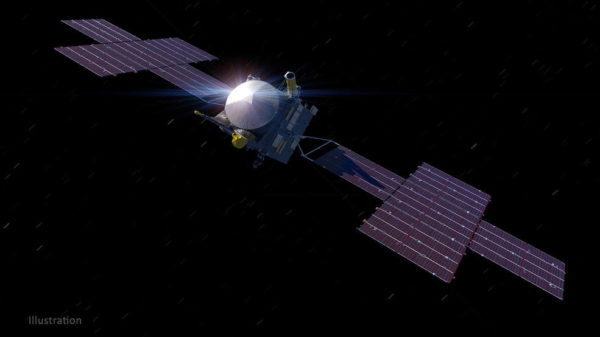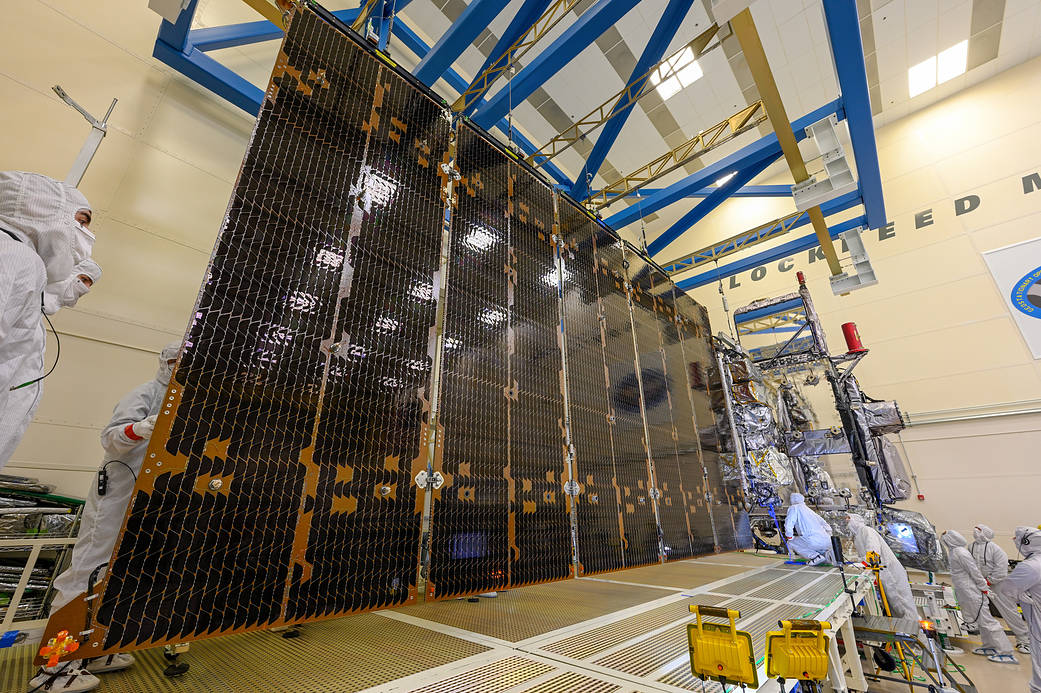The National Aeronautics and Space Association (NASA) and the National Oceanic and Atmospheric Administration (NOAA) announced the successful test deployment of a five-panel solar array that will power a weather satellite.
The satellite, GOES-U, is the fourth and final satellite in the GOES-R series. GOES-R is a collaboration with NASA and NOAA in which NASA builds and launches the satellite and NOAA operates it for weather event surveillance.
The satellites provide critical data for weather forecasts and warnings, detecting and monitoring environmental hazards like fire, smoke, fog, volcanic ash, and dust, and monitoring solar activity and space weather.
Lockheed Martin developed the solar array, a five-panel structure that carries 5 kW of capacity. This is equivalent to the power needed to run a home’s central air conditioning system. Each panel measures about 13 feet tall by 4.5 wide and weighs about 45 pounds.
At launch, the panels are folded together to protect them and ensure beneficial aerodynamics to reach orbit. Once in orbit, the panels will fold out on a single array wing that will rotate once per day, continuously pointing the solar cells toward the sun. During the test, engineers unfurled the five panels on railing that simulated a zero-gravity environment.
The PV cells are designed to convert enough sunlight into electricity to power the entire craft, including measurement instruments, computers, data processors, and telecommunications equipment.
The panels were manufactured at Lockheed Martin’s Littleton, Colorado facility, where the satellite was also constructed. GOES-U is scheduled for launch in April 2024.
Below is an artist concept video of a GOES-R satellite in action.
Solar in space
NASA has long used solar to power its spacecraft and satellites, and continues to use it for new missions today. In August 2022, NASA launched a tennis-court sized spacecraft, sending it on a 1.5-billion-mile journey to the asteroid Psyche, which the craft shares its name with. The Psyche craft is winged with two large cross-shaped solar arrays, which will power the craft’s measurement devices as well as its propulsion system.
Each array is 37.1 feet long and 24 feet wide when fully deployed. About an hour after launch, the arrays will deploy sequentially, first with the center column unfolding, and then the two cross-panels unfurling and latching into place. One wing at a time, the total deployment takes about seven and a half minutes.

Image: NASA
This is the largest solar array deployed by the Jet Propulsion Laboratory, said NASA. So large, in fact, that the entire craft could not be unfolded during the test at Arizona State University’s lab in Tempe, Ariz. ASU partnered with NASA on this mission, which will observe the suspected unusually high amount of metals in the thickest band of the asteroid.
NASA launched the Webb Space Telescope on Christmas Day 2021, and thirty minutes later Webb’s fold-out solar array deployed and activated. The world’s most powerful telescope, set to study phenomena like the formation of planets, and the age and extent of the universe, uses less power than one might think. In fact, only one kilowatt, equivalent to the power use of microwaving your lunch, is needed to power the device.
Webb will stay energy-efficient more than 1 million miles from Earth, said NASA. The 20-foot solar array is attached to the main observatory of the craft. It will act as the ‘powerhouse’ for the telescope, supplying energy to all its scientific instruments, communications, and propulsion systems. Though the telescope only needs 1 kW to perform, the array generates twice that much to factor in the degradation caused by the harsh conditions of space.
This content is protected by copyright and may not be reused. If you want to cooperate with us and would like to reuse some of our content, please contact: editors@pv-magazine.com.









By submitting this form you agree to pv magazine using your data for the purposes of publishing your comment.
Your personal data will only be disclosed or otherwise transmitted to third parties for the purposes of spam filtering or if this is necessary for technical maintenance of the website. Any other transfer to third parties will not take place unless this is justified on the basis of applicable data protection regulations or if pv magazine is legally obliged to do so.
You may revoke this consent at any time with effect for the future, in which case your personal data will be deleted immediately. Otherwise, your data will be deleted if pv magazine has processed your request or the purpose of data storage is fulfilled.
Further information on data privacy can be found in our Data Protection Policy.